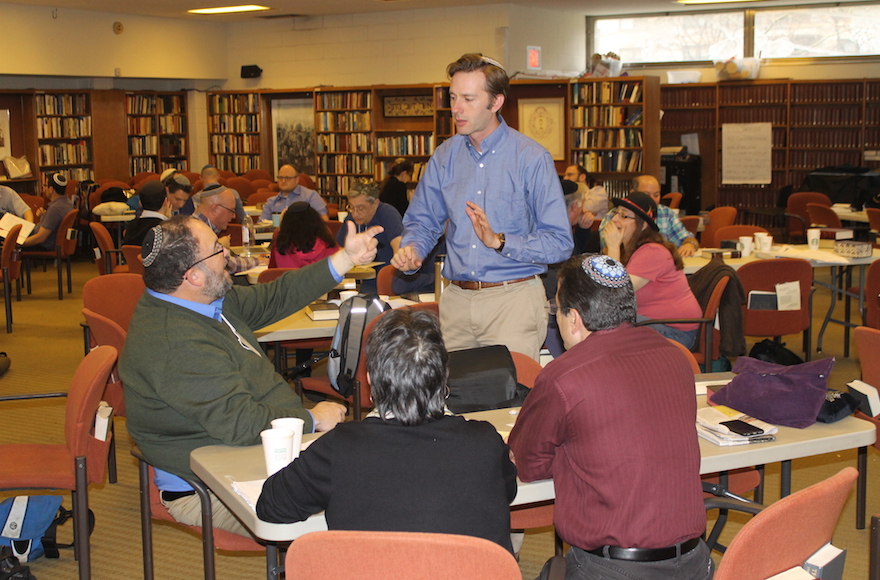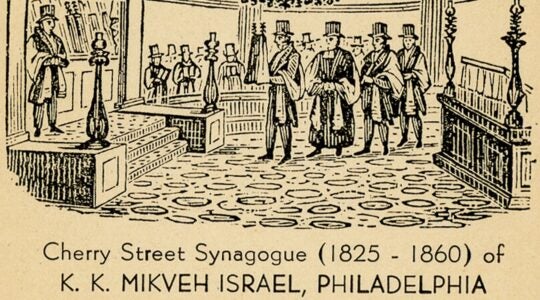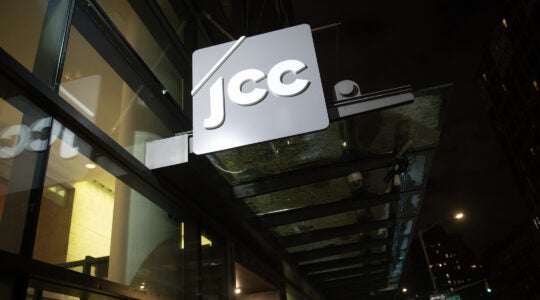When the group that would become the Hadar Institute launched in 2006 with a study hall in a rented space on Manhattan’s Upper West Side, it aimed to combine two things that, outside of a few rabbinical schools, were rarely found in the same place: immersive Torah study and a Jewish outlook that treats people equally regardless of gender.
Over time, Hadar’s brand of “traditional egalitarian” study and observance gained adherents and its programs reached a broader class of Jewish laypeople, professionals and educators. In the years since, the group has expanded to multiple cities, held a national gathering that drew 600 attendees and, last year, even minted its first cohort of rabbis.
Now, Hadar has announced plans to ordain more clergy, launch congregations, set up shop on college campuses and even start a gap-year program in Israel. By 2028, the organization’s new strategic plan says, it will be spending $18 million a year — up from $10 million now — to offer its trademark mix of programs around the world.
Hadar’s growth comes as non-Orthodox American Jewish denominations are in decline and independent Jewish communities that don’t identify with a particular stream are growing. Rabbinical schools are shrinking, gap-year programs shuttering and synagogue affiliation declining.
The new strategic plan throws into the open a question that those watching Hadar’s ascendance have begun to ask: Is Hadar the flagship of a new denomination, taking a place alongside — or even, in some ways, supplanting — the Reform and especially Conservative movements? And can it avoid the pitfalls that have bedeviled older institutions?
Hadar’s founders reject the premise as limiting and antiquated. Somewhat like the Hasidic movement Chabad, which runs outreach centers and programs the world over, they want to have something to offer all Jews, not just a subset.
“I think on some level, the term ‘denomination’ is 20th-century language and it doesn’t reflect how we think about what we’re doing,” Rabbi Ethan Tucker, Hadar’s president and rosh yeshiva, told the Jewish Telegraphic Agency.
“The language of ‘denomination’ connotes trying to carve out a slice of its community, like one of the 12 tribes, as it were,” Tucker said. In contrast, he said, Hadar aims to present “a strong religious vision that has all the entire Jewish community as its audience.”
The core of the institute’s vision is, as it has been since Hadar’s inauguration, a belief that rigorous Jewish learning has for too long been primarily the domain of spaces where there is little access for rank-and-file Jews who are also committed to gender egalitarianism and LGBTQ+ inclusion.
In the coming years, the group plans to launch its own versions of institutions that have long comprised the infrastructure of American Jewish religious communities: a regular national convention, a handful of on-campus chapters, at least two new synagogues, and a second rabbinical student cohort. It also plans to expand its offerings in Israel, where relatively few non-Orthodox Jews participate in traditional Jewish study or practice in an egalitarian atmosphere.
Another major focus of the strategic plan is the ordination of rabbis and the placing of rabbis in the yet-to-be-determined shul communities and campus chapters.
“There’s a need for leadership if we want there to be the leaders to fill all of these flagships,” said Rabbi Avi Killip, Hadar’s executive vice president. “The whole landscape actually needs more people who are more empowered and have more skills and more knowledge, and we want to be a part of making that happen.”
At a time when discourse over Israel has dominated and divided communal conversations, the strategic plan makes a point of saying that the country, and Zionism, have a central place in Jewish life.
“Zionism and sovereignty have enabled the flourishing of the Jewish people and Hebrew culture,” the strategic plan says. “In deep relationship with the Diaspora, Torah emerging from Israel impacts Jewish life everywhere.”
In one especially notable development, Hadar says it will launch an Israel gap year for high school graduates. Like a growing program operated by the Shalom Hartman Institute, its goal is to appeal to American Jewish families who do not feel constrained by denominational boundaries. The programs’ rise contrasts with the suspension of the gap-year program run by the Conservative movement, which also recently announced a restructuring of its youth conventions, doing away with its regional structure.

Rabbi Ethan Tucker, Hadar’s co-founder, talking with rabbis during a seminar at Hadar in Manhattan on March 1, 2017. (Ben Sales)
“The ecosystem feels like it is due for and experiencing a shakeup,” Tucker said. “The youth groups that were established and taken for granted 30 years ago are not necessarily looking exactly the same — and that’s not because there’s not Jewish youth on the map.”
Lauren Strauss, a historian who heads the department of Jewish studies at American University, wrote in an email that Hadar’s new plan reinforced her view that American Judaism is increasingly stepping away from the denominational categories that defined the mid-20th century.
“It’s not so much a question of whether Hadar resembles a mainstream denomination, but rather that we seem to be witnessing the decentralization of American Jewish religious life and the growth of a smorgasbord of different options,” Strauss said.
Under the denominational approach, Jews would traditionally pick a stream of Jewish practice and affiliate with the schools, synagogues and camps in that stream, which are generally under the umbrella of one or two large organizations. In the smorgasbord view, a Jew might hop among communities with different approaches, dropping in and out as their own preferences and needs shift. The evolution, which reflects a general societal shift toward individualization, has the benefit of flexibility for participants but the downsides, its critics say, of an attenuated sense of belonging and a lack of clarity about how to support needed institutions.
“Some see this as a negative development, as evidenced by the dwindling of rabbinical programs in the Reform, Conservative, and Reconstructionist movements,” Strauss said. “But some (exemplified by Hadar’s language in their strategic plan) see this as evidence of new growth.”
That’s certainly the case for Hadar and its fans, who over time have grown as the organization’s reach expanded. Last year, according to Hadar’s data, 34,000 people in 50 states and countries around the world encountered Hadar’s programming and products.
Sydney Levine, a psychology and research scientist specializing in how people and artificial intelligence make moral decisions, attended Hadar for summer courses in 2009 and 2010 as well as the Hadar Executive Seminar, a learning conference in 2017.
“I went to Hadar to try to find an answer to the question of how to live,” Levine shared in a 2017 Hadar alumni testimonial. “I think meaning might be constructed, but if so, it seems like a good idea to construct it through a conversation with a community grounded in a textual tradition obsessed with law. Hadar gave me the language to join that conversation and access that tradition.”
Levine called her experience with Hadar “transformative.”
But even some who believe in Hadar’s vision say they have worried that it had too much of an upstart approach.
“I have been a person who was slow to embrace Hadar because I — from going back to 10 years ago, they came in hot and heavy and came off as kind of an elitist, provocateur kind of thing,” said Rabbi Eric Leiderman, the president and cofounder of MasortiX, a consultancy for the Masorti Jewish movement, affiliated with Conservative Judaism. “But I really have warmed up to them and really appreciate their sincerity in that they’re not trying to be a disruptor but really putting their money where their mouth is and really doing their duty to do their mission.”
Leiderman, who is also the administrator of the satirical Facebook group Surely this Will Save Conservative Judaism, has been a vocal critic of establishment denominational Judaism in the United States. But he said that Hadar and Conservative Judaism — which also prizes egalitarianism and a commitment to halacha, or Jewish law — share core values.
“I don’t think they’re setting themselves up to be a new denomination or a new movement,” Leiderman said. “I think as people who embrace a Jewishly observant, religiously observant halachic practice that are also fully egalitarian and feminist and modern and progressive, I don’t think that’s anything new in terms of the denominations. I think that’s exactly what Conservative Judaism is all about.”
Hadar’s strategic plan aims to put skepticism about its rapid growth trajectory to rest. It outlines what it says is a sustainable approach to growth, committing to increasing individual donations by 75% over the next four years and doubling the amount of money the organization brings in by charging for products and services. Still, the bulk of the projected 2028 budget, about $10 million of the $18 million total, will come from foundations that currently also supply more than half of the organization’s operating budget.
Ultimately, Hadar’s leaders say, the Chabad comparison may be apt. The Hasidic group engages a diverse array of Jews, from those who live in traditionally Orthodox communities to those who are connecting with their Jewish identity for the first time, and has seen its reach — and fundraising — grow sharply in recent years. In that sense, Hadar hopes to follow suit.
“In certain ways, Chabad was ahead of the game,” Tucker said. “They understood that you didn’t need and shouldn’t be a denomination in order to go out and affect a lot of Jews.”
JTA has documented Jewish history in real-time for over a century. Keep our journalism strong by joining us in supporting independent, award-winning reporting.






